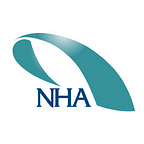Whooshh Creates Safe and Affordable Fish Passage System — Good for Fish and Good for Hydro
For years, the hydropower industry has spent hundreds of millions of dollars on environmental enhancement, including installing safe and efficient fish passage systems. While these systems continue to be a successful solution for transporting fish, Seattle-based Whooshh Innovations came up with an innovative solution to take fish passage to the next level — and not just from one side of the dam to the other.
Whooshh Innovations’ fish passage system represents fish and hydro in harmony. The system requires a few months to install, is much more cost-effective and provides safe passage for select fish species. The system also autonomously measures, counts and sorts fish that pass through the system, with the ability to cull out invasive species in the process.
A pilot of the Whooshh Fish Passage System was installed at the Cle Elum Dam, a 165-foot, earth-filled dam on Washington’s Cle Elum River. Sponsored by the United States Bureau of Reclamation (USBR), the project uses a 1,700-foot long, 180-foot high modular fish passage system that can accommodate the river’s 70-vertical-foot reservoir fluctuation.
The Whooshh system installation began on April 17, 2017. Less than 2.5 months later, it was ready for use. In mid-July 2017, sockeye salmon began moving through the system, traveling 1,700 feet (including a 180-foot rise) and exiting into the reservoir above with a total travel time averaging approximately sixty seconds.
Building on a 2009 sockeye reintroduction effort initiated by the Yakama Nation, USBR and the Yakima River Basin Integrated Water Resource Management Plan, the Whooshh System design allowed the sockeye to successfully pass over the Cle Elum dam for the first time in 100 years without requiring trap and haul.
The Whooshh system relies on misted air rather than a column of water to move fish of many shapes and sizes without injury at a fast but controlled and gentle speed. The Whooshh System also has demonstrated its efficacy through numerous third-party evaluations studying fish safety, stress, health, migration, homing, mortality, reproduction and behavior.
“The fish fly right through without so much as a scratch,” says Research Scientist Yakama Nation Fisheries Mark Johnston. “Also, you won’t have to divert water, as you do in a ladder system. Out here, the economy is all about agriculture, and water is gold. That’s what makes Whooshh such a great concept.”
Because the system is modular, accommodates any fish species, and can meet the needs of high and low-head dams, it marks the beginning of affordable and effective solutions for fish passage over non-powered U.S. dams — enabling the growth of hydropower without building new dams.
“The Whooshh System does not require water be used to assist the fish up and over the dam,” says Whoosh Innovations’ Director Michael Messina. “In typical fish passage systems, up to 10 percent of water flow is diverted from the production of hydropwer. If an existing dam switched to our system, it could increase hydropower production by directing all that water through the turbines and get the fish over the dam faster and with less stress. This increases power production at existing dams without adding new generation capacity and also helps make it easier and more affordable to bring new generation to non-power dams.”
“Certainly there is an obvious economic opportunity to increase revenue for the hydropower operator, but there is also the assurance that you are not creating increased operation and maintenance expenses by passing invasive species and undertaking endless adaptive management,” says CEO Vince Bryan III.
This successful effort earned Whooshh Innovations a National Hydropower Association 2018 Outstanding Stewards of America’s Waters Recreational, Environmental, & Historical Enhancement Award.
“The Whooshh Fish Passage System is an innovative technology,” said Linda Church Ciocci, NHA Executive Director. “It doesn’t just allow for successful, affordable and safe fish passage, but it also allows for better documentation and control of invasive species.”
